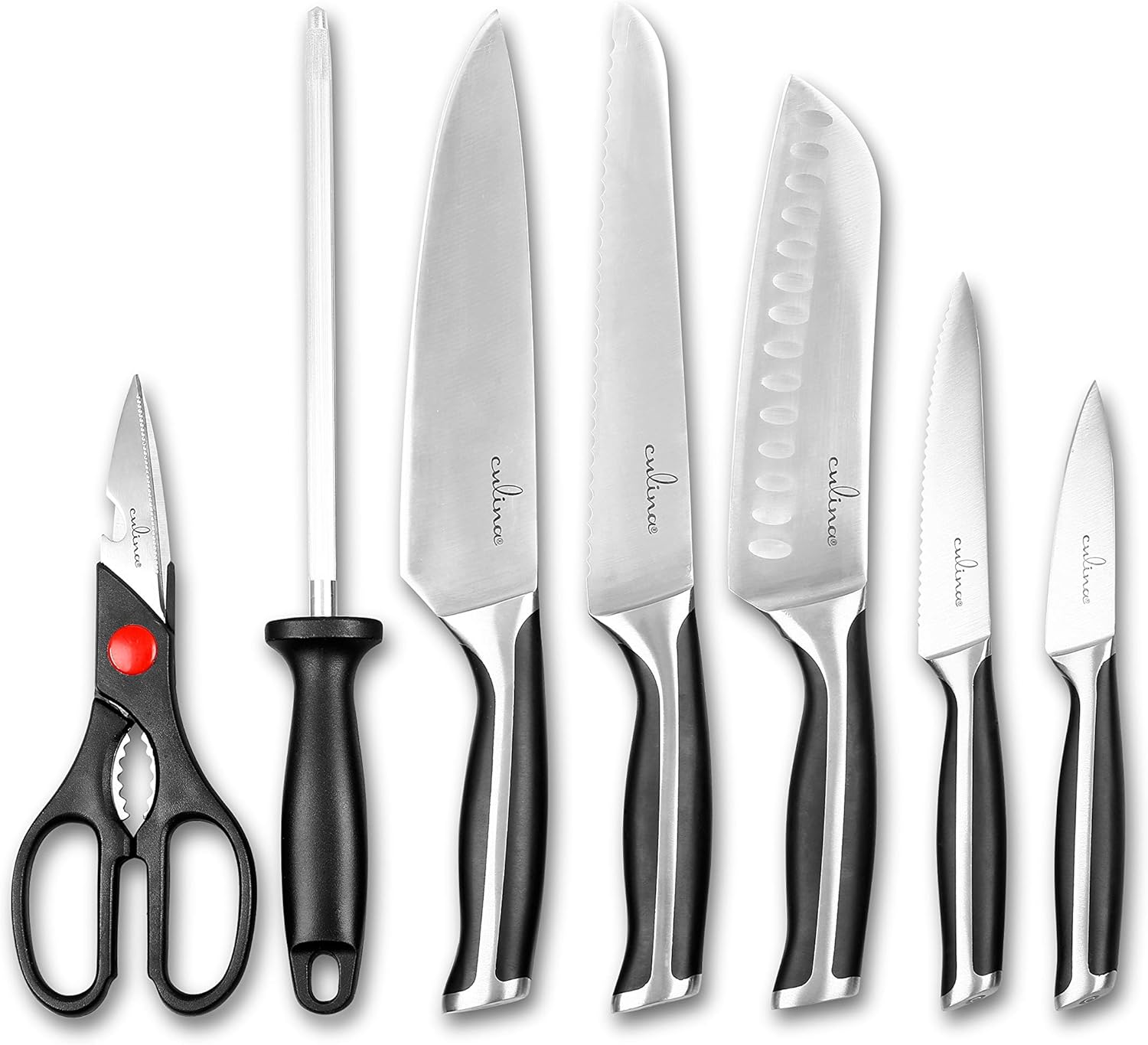For kitchen professionals and enthusiasts, maintaining the efficiency and sharpness of your knives is paramount. One of the most common issues you may encounter is nicks on the blade. These imperfections can hinder your knife's performance and, over time, may even render it useless. This guide is here to provide tremendous insights and detailed steps to aid you in removing nicks from a knife blade. Whether you're a seasoned chef or a home cook, this article aims to help you restore your knives to their former glory.

Understanding Blade Nicks
Before diving into the methods of removing nicks, it's important to understand what causes them. Nicks can develop from various activities, such as repetitive use, cutting through hard substances, or improper storage. Over time, these small dents and chips can accumulate, affecting the smoothness and sharpness of your blade.
Common Causes of Blade Nicks
Here are some common reasons your knife blade might develop nicks:
- Improper cutting techniques: Applying excessive force or using the blade on hard surfaces.
- Poor quality blades: Inferior materials are more prone to chipping.
- Lack of regular maintenance: Neglecting sharpening and honing routines.
- Improper storage: Storing knives in a drawer without a protective cover.

Essential Tools for Nicks Removal
To begin with the process of removing nicks from a knife blade, you will need certain tools. Having these tools ready will make the job easier and more efficient.
Key Tools You Will Need
Here's a list of tools to gather before you start:
- Whetstone or sharpening stone: A whetstone is the most recommended tool for sharpening knives and removing nicks.
- Honing rod: To realign the edge after nicks are removed.
- Soft cloth: For cleaning the blade before and after the procedure.
- Leather strop: Optional but beneficial for polishing the blade to a fine edge.

The Step-by-Step Process to Remove Nicks
Now that you understand the causes and have the necessary tools, follow these steps to remove the nicks from your knife blade:
1. Clean the Knife
Before you start, clean your knife thoroughly with soap and water to remove any dirt or debris. Ensure it is completely dry before proceeding.
2. Prepare the Whetstone
Soak the whetstone in water (if it's a water stone) for about 10-15 minutes. This helps in creating a slurry that aids in the sharpening process.
3. Sharpening the Blade
Start by placing the knife at a 20-degree angle on the coarse side of the whetstone. Using a back-and-forth motion, grind the blade against the stone. Focus on the areas with nicks, applying more pressure as needed. Repeat this process until the nicks are smoothed out.
4. Honing the Edge
After the nicks are removed, use the honing rod to realign the edge of the blade. Hold the rod vertically and drag the blade down it at a 15-degree angle. Do this on both sides of the blade.
5. Polishing the Edge
If you have a leather strop, use it to give your blade a polished finish. This step is optional but can enhance the sharpness and longevity of your knife.
Maintaining Your Knife After Nicks Removal
Once you've successfully removed the nicks and sharpened your blade, proper maintenance is key to preventing further damage.
Regular Sharpening and Honing
Establish a routine for regular sharpening and honing. Sharpen your knives every few months and hone them frequently to maintain the edge.
Proper Storage
Avoid storing your knives in drawers without protective covers. Use a knife block, magnetic strip, or blade guards to protect the edge.
Cutting Techniques
Always use appropriate cutting techniques. Avoid chopping on hard surfaces such as stone or glass and opt for wooden or plastic cutting boards.
Conclusion
By following these steps and tips, you'll be able to effectively remove nicks from your knife blade and maintain their sharpness and longevity. For more detailed guidelines on sharpening and blade maintenance, you can visit Blade Smiths.
As an Amazon Associate, I earn from qualifying purchases.
For more advanced techniques, check out our guide on polishing knife blades and finding the perfect angle to sharpen your knives. If you're looking for a new knife set that's self-sharpening, we recommend this Henckel's Statement set.
For advice on which knife fits your culinary needs, explore different knife uses.
FAQ
1. How often should I sharpen my knife?
It's recommended to sharpen your knife every few months and hone it frequently to maintain its edge.
2. Can I use an electric sharpener to remove nicks?
Yes, an electric sharpener can be used, but manual sharpening provides more precision and control.
3. Are whetstones better than sharpening steels for removing nicks?
Whetstones are generally preferred for removing nicks as they provide a finer edge and more control during the sharpening process.


























